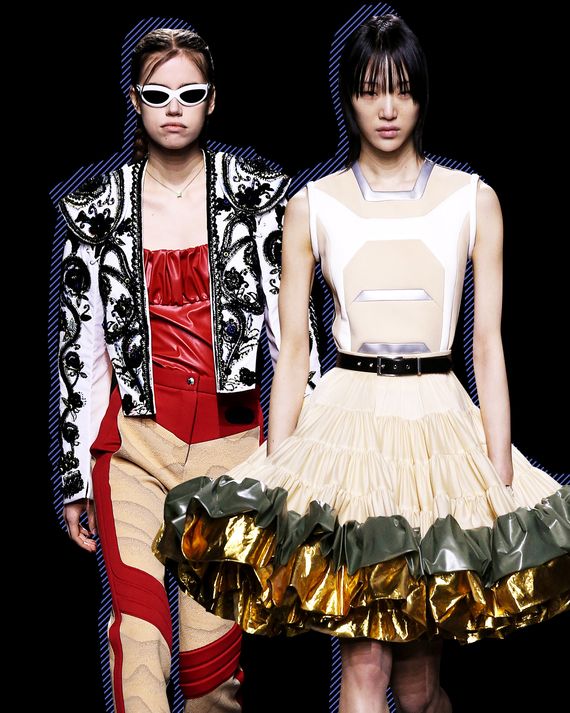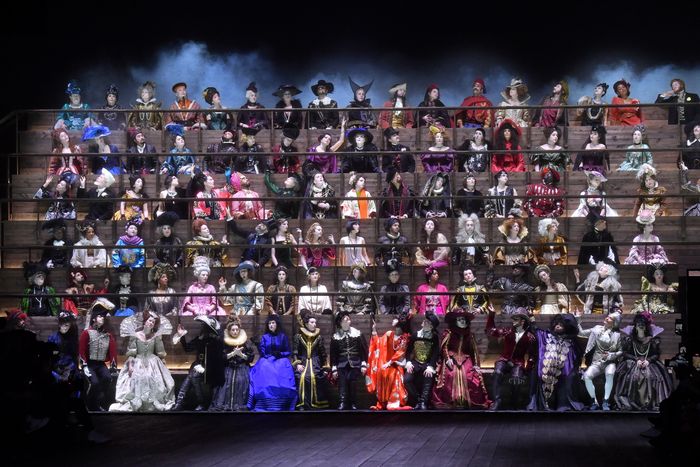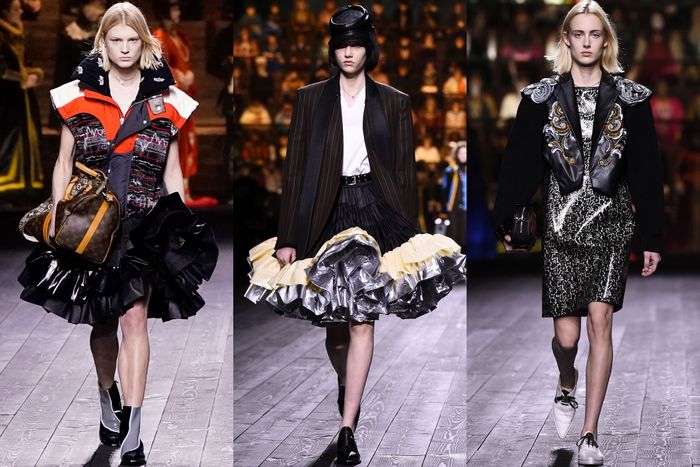
Nicolas Ghesquière is one of the most history-minded designers and also one of the most forward-thinking. His ability to time-travel first came to light in the early aughts, when he was reviving Balenciaga. Indeed, he was so good at snatching something from the past — a volume, a line — and blending it into a stream of newer references — digital technology, sports — that he more or less set the standard.
But what if you could make that point a bit more clearly? What if you could not only show those connections between past and present but also bring to life the fashionable ladies and gentlemen of the past and have them watch us, in 2020 … at a fashion show?
That’s exactly what Ghesquière did last night at Louis Vuitton in one of the most original fashion presentations of the past quarter-century. Working with the Oscar-winning costume designer Milena Canonero (Out of Africa, A Clockwork Orange, The Grand Budapest Hotel), he created a kind of tableau of men and women in historical dress along the entire back wall of the minimalist black set in the Cour Carrée of the Louvre. There were some 200 people dressed in costumes and wigs representative of the 1400s through 1950. And because they were seated in a vertical bank of rows, one atop the other, they appeared to be sitting in judgment.
Their presence was not obvious until the show began, and a screen rose on the wall, and the first model, in a padded sport vest and a shiny black mini-crini and booties, emerged from a tunnel in the center. How well you could see the costumes depended on where you were sitting. But anyway it didn’t matter. The wall of figures was composed and lighted like a banquet painting — a living painting, too, since the people in their Renaissance and Belle Epoque finery occasionally moved in coordinated ways.
They also sang, which was fairly mind-blowing. According to the show notes, the music, composed by Woodkid and Bryce Dessner, apparently included work by Nicolas de Grigny (1672–1703), a composer and chief organist of Notre-Dame de Reims, where the French kings were crowned. Though his music was copied at the time — by Bach, among others — it supposedly fell into obscurity until a volume of his compositions surfaced in the 20th century. So Grigny was getting a belated airing at the Louvre.
Ghesquière, who is one of the co-chairs of this year’s time-themed Costume Institute gala, titled the presentation “Time Clash.” Throughout the show, the costumed figures remained on the wall, as if to preserve the idea that they belonged in a different dimension — influential but apart. And the clothes on the runway generally made subtle reference to history, like the marvelous mini-crinis, with a pleated edge in metallic silver, gold, or black leather; lace-print pieces; and embroidered jackets, perhaps based on the masculine doublet. The overwhelming impression was of new clothing with a sleek, spacecraft charge.
Ghesquière apparently had this history show in mind for a long time. It’s certainly relevant today, but it’s also deeply personal — as Marc Jacobs’s collaboration with Karole Armitage was last month. How do you imply the gestures and thoughts that move you as a designer — that is, without clobbering everyone over the head? I don’t know about anyone else, but I floated out of the Louvre last night.
More From Paris Fashion Week
- 5 Minutes With Amber Heard
- More of the Best Street Style From Paris Fashion Week
- Chanel’s Reality, Louis Vuitton’s Fantasy






